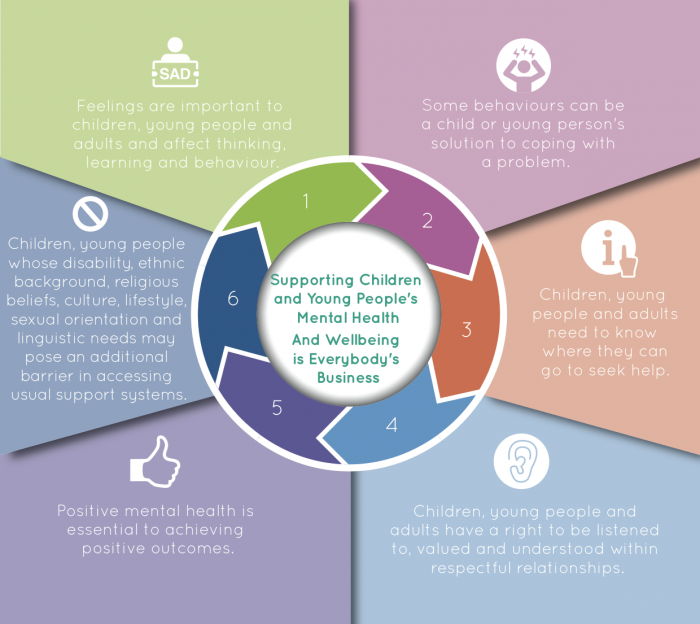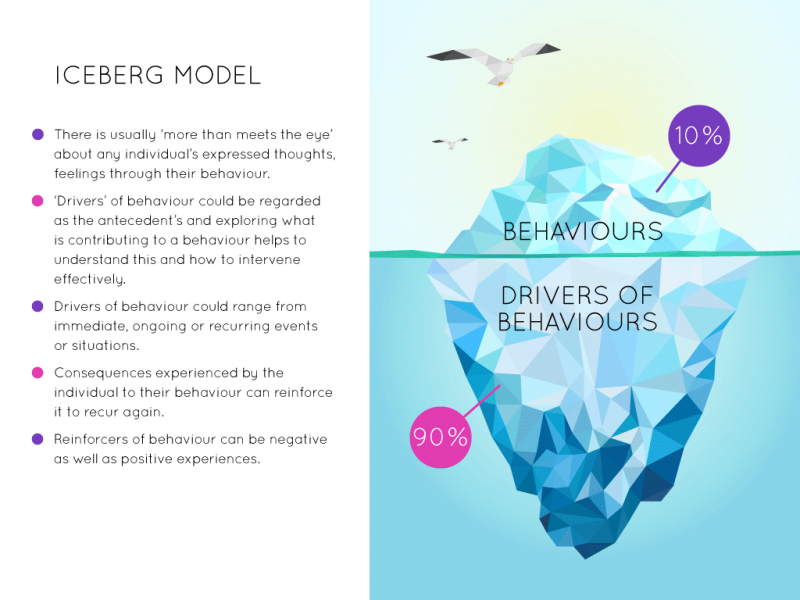Gathering information and assessing


The table on this page shows the protective factors that can make it more likely for a pupil to deal with adversity while maintaining good mental health. The risk factors indicate the greater likelihood of a pupil finding it hard to maintain good mental health. The greater the number of risk factors and fewer protective factors, the more likely a pupil is to have a mental health difficulty.
The balance of risk and protective factors can affect pupils’ coping skills and their emotional well-being. However, this balance can be changed and resilience can be enhanced by providing appropriate resources and experiences. These coping skills can be taught and learnt.
Interactive Assessment Tools for Anxiety/Depression etc.
Aggression
Anxiety
- Hospital Anxiety and Depression (HAD) scale
- Generalized Anxiety Disorder 7 Item (GAD-7)
- Hamilton Anxiety Rating Scale (HAM-A)
- Liebowitz Social Anxiety Scale (LSAS)
- Panic and Agoraphobia Scale (PAS)
- Spence Children’s Anxiety Scale (SCAS)
- Social Phobia Inventory (SPIN)
- Taylor Manifest Anxiety Scale (TMAS)
- Zung Self-Rating Anxiety Scale (SAS)
Autism Spectrum
Bipolar
Depression
Eating Disorders
OCD
C-GAS Initial Baseline Measure
Children's Global Assessment Scale
The Children's Global Assessment Scale (CGAS) is a numeric scale (1 through 100) used by mental health clinicians to rate the general functioning of children under the age of 18.
Application: Ratings on a CGAS scale should be independent of specific mental health diagnoses. The scale is presented and described Shaffer D, Gould MS, Brasic J, et al. (1983) A children's global assessment scale (CGAS). Archives of General Psychiatry, 40, 1228-1231.
Universal
100-91
DOING VERY WELL
Superior functioning in all areas (at home, at school and with peers), involved in a range of activities and has many interests (e.g. has hobbies or participates in extracurricular activities or belongs to an organised group such as Scouts, etc.). Likeable, confident, everyday worries never get out of hand. Doing well in school. No symptoms.
90-81
DOING WELL
Good functioning in all areas. Secure in family, school, and with peers. There may be transient difficulties and "everyday" worries that occasionally get out of hand (e.g. mild anxiety associated with an important exam, occasionally "blow-ups" with siblings, parents or peers).
Targeted
DOING ALL RIGHT –minor impairment
No more than slight impairment in functioning at home, at school or with peers. Some disturbance of behaviour or emotional distress may be present in response to life stresses (e.g. parental separations, deaths, birth of a sibling) but these are brief and interference with functioning is transient; such children are only minimally disturbing to others and are not considered deviant by those who know them.
70-61
SOME PROBLEMS - in one area only
Some difficulty in a single area, but generally functioning pretty well, (e.g. sporadic or isolated antisocial acts such as occasionally playing hooky, petty theft; consistent minor difficulties with school work, mood changes of brief duration, fears and anxieties which do not lead to gross avoidance behaviour; self-doubts). Has some meaningful interpersonal relationships. Most people who do not know the child well would not consider him/her deviant but those who do know him/her well might express concern.
Targeted Plus
60-51
SOME NOTICEABLE PROBLEMS – in more than one area
Variable functioning with sporadic difficulties or symptoms in several but not all social areas. Disturbance would be apparent to those who encounter the child in a dysfunctional setting or time but not to those who see the child in other settings.
Specialist
50-41
OBVIOUS PROBLEMS – moderate impairment in most areas or severe in one area
Moderate degree of interference in functioning in most social areas or severe impairment functioning in one area, such as might result from, for example, suicidal preoccupations and ruminations, school refusal and other forms of anxiety, obsessive rituals, major conversion symptoms, frequent anxiety attacks, frequent episodes of aggressive or other antisocial behaviour with some preservation of meaningful social relationships.
40-31
SERIOUS PROBLEMS – major impairment in several areas and unable to function in one area
Major impairment in functioning in several areas and unable to function in one of these areas, i.e. disturbed at home, at school, with peers or in the society at large, e.g. persistent aggression without clear instigation; markedly withdrawn and isolated behaviour due to either mood or through disturbance, suicidal attempts with clear lethal intent. Such children are likely to require special schooling and/or hospitalisation or withdrawal from school (but this is not a sufficient criterion for inclusion in this category).
Highly Specialist
30-21
SEVERE PROBLEMS - unable to function in almost all situations
Unable to function in almost all areas, e.g. stays at home, in ward or in bed all day without taking part in social activities OR severe impairment in reality testing OR serious impairment in communication (e.g. sometimes incoherent or inappropriate).
20-11
VERY SEVERELY IMPAIRED -considerable supervision is required for safety
Needs considerable supervision to prevent hurting others or self, e.g. frequently violent, repeated suicide attempts OR to maintain personal hygiene! OR gross impairment in all forms of communication, e.g. severe abnormalities in verbal and gestural communication, marked social aloofness, stupor, etc.
10-1
EXTREMELY IMPAIRED - constant supervision is required for safety
Needs constant supervision (24-hour care) due to severely aggressive or self-destructive behaviour or gross impairment in reality testing, communication, cognition, affect or personal hygiene.
View guide and case vignette's for scoring CGAS Here
Your login details have been used by another user or machine. Login details can only be used once at any one time so you have therefore automatically been logged out. Please contact your sites administrator if you believe this other user or machine has unauthorised access.

